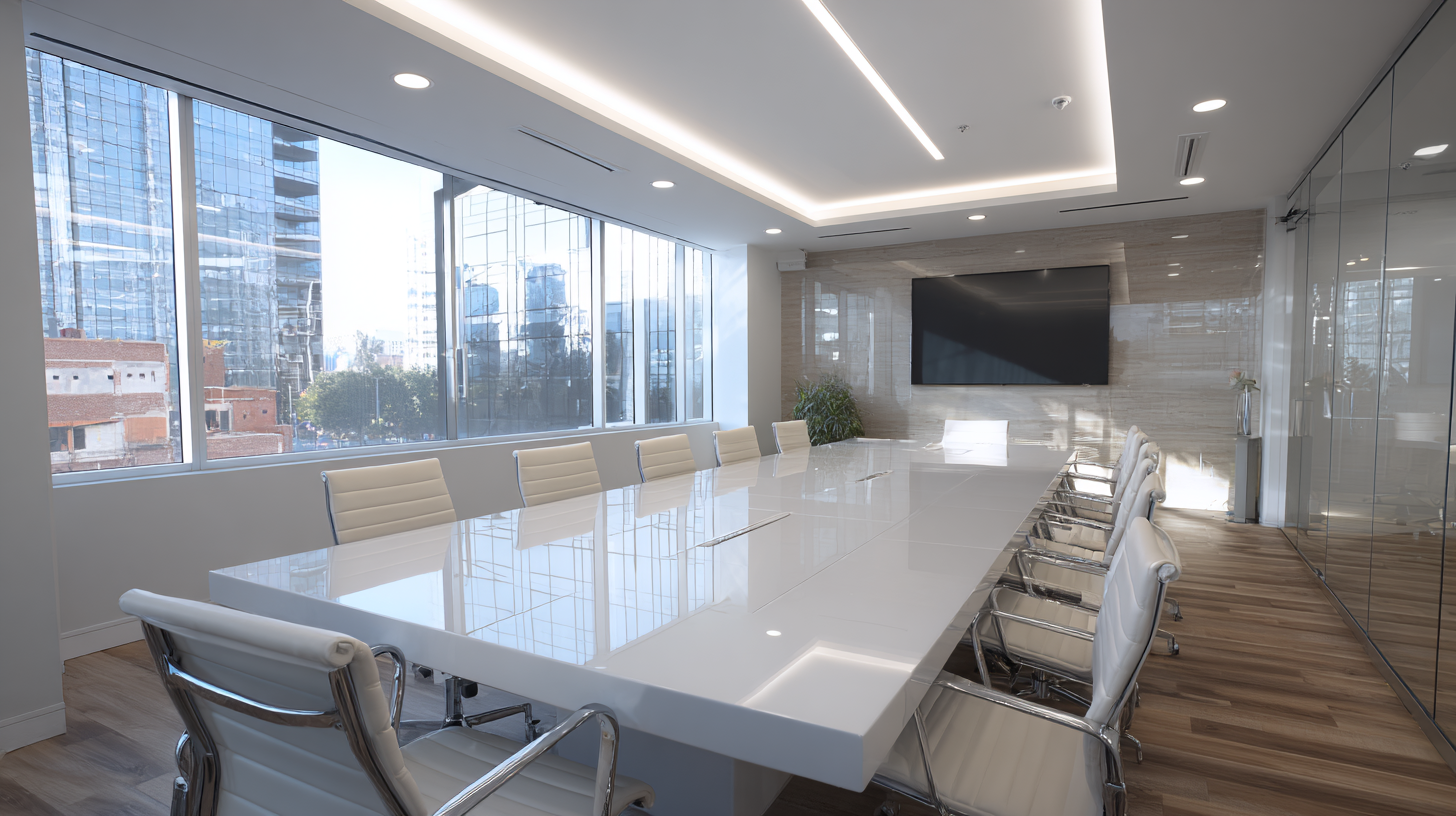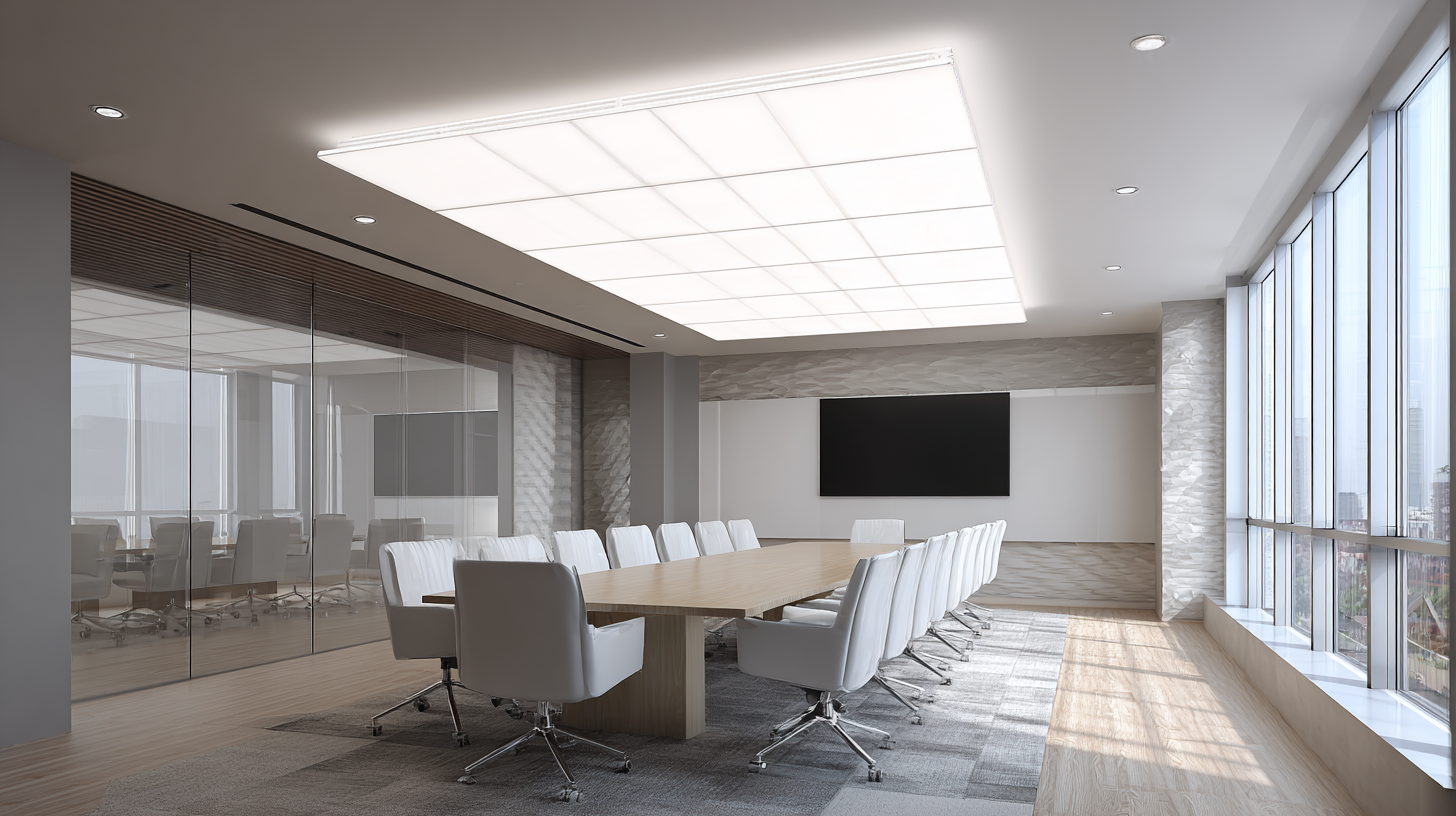7 Best Strategies for Choosing the Perfect LED Panel for Your Space
In recent years, the demand for energy-efficient lighting solutions has surged, with the global LED market projected to reach $105 billion by 2025, according to a report by MarketsAndMarkets. Among various solutions, LED panels have emerged as a preferred choice for both residential and commercial spaces due to their versatility, low energy consumption, and ability to provide even lighting. A study by the U.S. Department of Energy found that switching to LED lighting can reduce energy costs by up to 75%, emphasizing the economic benefits of these technologies. However, with a wide array of LED panel options available, selecting the perfect one for your space can be challenging. This blog will explore seven essential strategies to guide you in making an informed decision when choosing the ideal LED panel, ensuring that you not only enhance your lighting aesthetic but also optimize energy efficiency.

Understanding Your Space: Size and Layout Considerations for LED Panels
When selecting the perfect LED panel for your space, understanding the size and layout of the area is paramount. Every room has unique dimensions and furnishings that can dramatically influence the effectiveness and aesthetic appeal of LED lighting. Begin by measuring the total area where the panel will be installed, considering both the height and width of the walls or ceilings. This will help you determine the size of the LED panels that will fit comfortably without overwhelming the space or becoming lost in vast expanses.

Equally important is the layout of the area. Think about the existing furniture and architectural features. If the room is filled with large furniture pieces, you may want to opt for larger or multiple LED panels to ensure effective illumination. Conversely, in more minimalistic spaces, smaller panels may suffice and enhance the room's sleek design. Additionally, take into account how natural light flows through the room at different times of day. This will not only inform the choice of size but also the brightness of the LED panels, allowing you to create a balanced and well-lit environment that complements your overall design vision.
Light Quality Matters: Choosing the Right Color Temperature for Your Needs
When selecting the ideal LED panel for your space, one of the most crucial considerations is the color temperature. Measured in Kelvins (K), color temperature significantly influences how spaces feel and function. Research shows that warmer tones (2700K-3000K) create a cozy atmosphere, making them perfect for living rooms and bedrooms, while cooler tones (4000K-5000K) can enhance focus and productivity, ideal for office environments. According to the Lighting Research Center, the right color temperature not only affects mood but also impacts cognitive performance, with studies indicating that tasks requiring concentration are best performed under cooler lighting.
Additionally, it's essential to consider the color rendering index (CRI) alongside color temperature. A higher CRI (above 90) means colors appear more vibrant and true to life, which is particularly important in spaces such as art studios or retail environments where accurate color presentation is critical. The U.S. Department of Energy highlights that LED lighting offers advancements in CRI, allowing designers to choose panels that not only illuminate but also enhance the overall aesthetic of the space. Thus, when choosing an LED panel, pay attention to both color temperature and CRI to create an environment that aligns perfectly with your needs.
Energy Efficiency: How to Select an Eco-Friendly LED Panel
When selecting an eco-friendly LED panel, energy efficiency should be at the forefront of your decision-making process. Opt for panels that boast a high luminous efficacy, typically measured in lumens per watt. The most efficient panels will provide more light output for less energy consumption, resulting in lower electric bills and a reduced carbon footprint. Look for products that are certified by recognized energy efficiency programs, such as ENERGY STAR, which indicates a commitment to manufacturing sustainable lighting solutions.
Additionally, consider the lifespan of the LED panel you choose. High-quality LED panels can last up to 50,000 hours or more, minimizing the need for frequent replacements and the waste generated by discarded lighting products. It's also beneficial to select panels made from recyclable materials, further supporting sustainable practices. When browsing LED options, pay attention to the color temperature, too; panels that emit a warm white light can create a more inviting atmosphere while still being energy-efficient. By keeping these factors in mind, you can ensure that your choice not only enhances your space aesthetically but also contributes to environmental sustainability.
Energy Efficiency Comparison of Different LED Panel Types
Controlling Light: The Importance of Dimming Options and Smart Features
When selecting the perfect LED panel for your space, understanding the importance of dimming options and smart features is crucial. According to a report from the International Energy Agency, dimmable lighting can reduce energy consumption by up to 20% compared to non-dimmable options. This capability not only enhances the ambiance by allowing users to adjust brightness according to different activities and times of day but also promotes energy efficiency, making it an essential factor in contemporary lighting design.
Smart features, such as compatibility with home automation systems, provide additional benefits to LED panels. A study from the American Lighting Association indicates that over 50% of homeowners are interested in incorporating smart lighting solutions into their homes. These smart LED panels enable users to control lighting settings remotely, schedule lighting changes, and even create mood lighting with a simple app. With this level of control, users can personalize their environments while maximizing potential energy savings, demonstrating that investing in advanced lighting technology is not just about aesthetics but also efficiency and convenience.

Budgeting for Brilliance: Finding the Best Value in LED Panel Lighting
When it comes to selecting the perfect LED panel lighting for your space, budgeting is a crucial aspect that can significantly impact your overall satisfaction. According to a report published by the U.S. Department of Energy, LED lighting can save up to 75% more energy than traditional incandescent bulbs. This energy efficiency translates into lower utility bills, making it an investment that pays off in the long run. When planning your budget, it is essential to consider not only the initial purchase price but also these ongoing savings, which can lead to substantial financial benefits over time.
Additionally, according to a study by Grand View Research, the global LED lighting market is expected to reach $131.4 billion by 2027, driven by advancements in technology and increasing demand for energy-efficient lighting solutions. By keeping an eye on market trends and pricing fluctuations, consumers can identify the best value options that provide high-quality lighting without breaking the bank. Opting for LED panels that come with warranties or those that have been recognized by energy-saving certifications can further enhance your value proposition, ensuring that your investment is both smart and sustainable.
7 Best Strategies for Choosing the Perfect LED Panel for Your Space - Budgeting for Brilliance: Finding the Best Value in LED Panel Lighting
| Strategy | Description | Key Considerations | Estimated Cost ($) |
|---|---|---|---|
| Determine Your Space Size | Assess the dimensions of your room to choose the appropriate panel size. | Room dimensions, ceiling height | $50 - $200 |
| Consider Light Output | Choose panels with adequate lumen output for your lighting needs. | Lumen ratings, purpose of light | $60 - $180 |
| Evaluate Color Temperature | Select a color temperature that suits the room's atmosphere. | 2700K to 6500K options | $70 - $250 |
| Check Energy Efficiency | Look for high-efficiency models to reduce energy consumption. | Wattage, efficiency ratings | $80 - $300 |
| Assess Dimming Options | Choose panels that offer dimming capabilities for mood flexibility. | Compatibility with dimmers | $90 - $260 |
| Warranty and Lifespan | Opt for panels with longer warranties and expected lifespan. | Warranty terms, lifespan estimates | $50 - $220 |
| Read Customer Reviews | Research user experiences and ratings before purchasing. | Customer ratings, satisfaction levels | $0 - $30 (research cost) |
Related Posts
-

5 Reasons Why Solar LED Lights Are the Smart Choice for Your Home
-

5 Essential Tips for Choosing the Best LED Solar Lights for Your Outdoor Space
-

Ultimate Guide to Choosing the Best LED Explosion Proof Lighting for Your Industrial Needs
-

15 Powerful Tips for Sourcing the Best LED Solar Lights for Your Business
-

How to Choose the Best LED Outdoor Lighting for Your Garden
-

How to Choose the Right LED Wall Pack Light for Your Commercial Space
